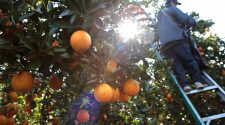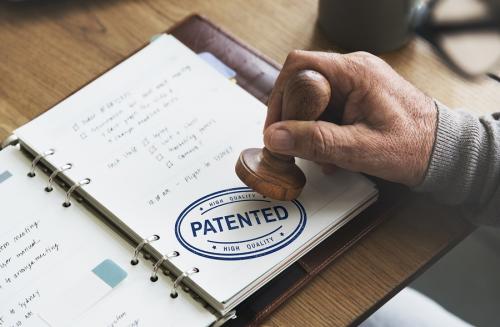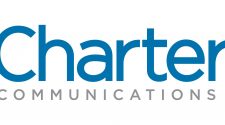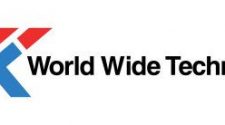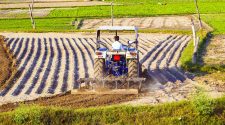Carbon capture technologies generally pertain to the capture of carbon dioxide (CO2) by certain materials or systems. Such materials or systems can then process the captured CO2 in various manners, such as through storage at a remote site, chemical conversion, or secondary uses.
In view of global efforts to reduce CO2 emissions, carbon capture technologies have found numerous commercial applications. Patent protection can help facilitate and incentivize such commercialization efforts by providing exclusivity.
In the United States, utility patents provide protection for any “new and useful process, machine, manufacture, or composition of matter, or any new and useful improvement thereof.” [1] During the term of a patent, patent holders can exclude others from making, using, offering to sell, or selling any patented invention in the United States, and importing any patented invention into the United States[2].
A proper patent protection strategy can help maximize the commercialization potential of a carbon capture technology. In devising such a patent protection strategy, patent applicants should at least consider the following guidelines:
- Conduct prior art searches before seeking patent protection;
- File a patent application before any sales or public disclosures;
- Start patent protection early by filing a provisional patent application;
- Continue patent protection by filing an international patent application;
- Claim different aspects of the carbon capture technology;
- Emphasize the unpredictable aspects of the carbon capture technology; and
- Consider modes of protection other than utility patents.
Conduct prior art searches before seeking patent protection
Carbon capture technologies represent a very crowded field with numerous publications, patent applications, and granted patents. As such, a thorough prior art search related to a carbon capture technology can help assess the strength of its patentability. The search results can also help in drafting a patent application that is distinguishable from the prior art.
Applicants can conduct initial prior art searches through free online databases. The United States Patent and Trademark Office (USPTO) and Google Patents provide free databases of published patents and patent applications. Both databases also provide helpful guidelines on how to conduct prior art searches[3]. Applicants can also hire a search firm to conduct more detailed prior art searches.
File a patent application before any sales or public disclosures
An applicant’s own activities prior to filing a patent application could adversely affect the patentability of a carbon capture technology. Such pre-filing activities include an inventor’s printed publications, public uses, sales, offers of sale, or other public disclosures of the technology[4].
Under some circumstances, applicants in the United States may be able to prevent their own public disclosures from affecting the patentability of an invention if such disclosures occurred within a year prior to the filing date of the application[5]. However, such exceptions do not consistently exist in other countries[6]. Moreover, making an invention available to the public prior to filing could entice competitors to file similar patent applications, thereby making the attainment of a patent even more difficult for the original inventor.
Therefore, in order to avoid unnecessary impediments to obtaining patent protection in the United States and abroad, applicants should avoid any sales, offers of sales, or public disclosures of a carbon capture technology prior to filing a patent application for the technology. Specific examples of pre-filing activities that applicants should avoid include:
- Publication of research articles pertaining to a carbon capture technology;
- Trade show presentations of a carbon capture technology;
- Conference abstracts that provide an overview of a carbon capture technology;
- Actual sales of a carbon capture system; and
- Offers to sell a carbon capture system.
Start patent protection early by filing a provisional patent application
Since carbon capture technology is a crowded field, multiple parties may develop similar technologies at the same time. Typically, however, the first party to file the patent application on the technology will have the ability to prevent the other parties from obtaining a patent on the technology[7].
Therefore, in order to preserve maximum rights for a carbon capture technology, applicants should file a patent application on the technology as soon as it demonstrates a reasonable potential to capture and/or process CO2. The filing of a provisional patent application at such an early stage in development provides a cost-effective means to do so.
A provisional patent application provides applicants with the ability to establish an early effective filing date in a later filed non-provisional patent application[8]. In order to claim such priority, Applicants must file the non-provisional application within one year of the filing date of the provisional patent application[9]. Applicants must also disclose the invention in sufficient detail in the provisional patent application[10].
Furthermore, since a provisional application is less costly and has fewer requirements than a non-provisional application, the filing of a provisional application can help defer costs for up to one year[11]. Moreover, the one-year period will allow the applicant to take important steps, such as assessing the commercial value of the carbon capture technology, finding partners or investors, and assessing whether or not to move forward with the filing of a more costly non-provisional application.
Continue patent protection by filing an international patent application
If an interest remains in pursuing a carbon capture technology disclosed in a provisional patent application, then the applicant must file one or more non-provisional applications in jurisdictions of interest within a year from the filing date of the provisional application. Even though carbon capture technologies have global applications, the filing of separate non-provisional applications in different countries or regions of interest may be costly and impractical, especially at the early stages of development. However, the filing of a single international patent application under the Patent Cooperation Treaty (i.e., a PCT application) can help applicants reserve patent rights in multiple jurisdictions while they further assess the strength and commercial potential of a carbon capture technology[12].
A PCT application can enter over 150 countries or regions through the filing of separate national stage patent applications prior to its expiration[13]. Since PCT applications typically expire within 30 to 31 months from their effective filing date (e.g., the filing date of a priority provisional patent application), the Patent Cooperation Treaty provides its applicants with ample technology assessment time. The Patent Cooperation Treaty further assists applicants with the technology assessment by issuing an International Search Report during the aforementioned period, which is a non-binding report on the patentability of an invention in view of prior art search results[14].
If applicants remain interested in further pursuing the carbon capture technology prior to the expiration of the PCT application, then they will have the opportunity to file separate patent applications in key countries and regions that have market potential for carbon capture technologies. Such countries and regions include the United States, Canada, China, Japan and Europe[15].
Claim different aspects of the carbon capture technology
Claims in a patent application define the subject matter of the invention[16]. Such claims must precisely identify the scope of the invention[17]. In particular, the claims should be broad enough to cover the commercial aspects of a technology and narrow enough to be distinguishable from the prior art.
In order to maximize the scope of patent protection, applicants should include claims that identify different aspects of a technology. Examples of such different claims in the field of carbon capture include:
- The specific materials for capturing CO2 (e.g., sorbents, solvents and/or membranes);
- The overall system for capturing CO2;
- Methods of utilizing the materials and systems to capture CO2;
- Methods of disposing of the captured CO2;
- Methods of chemically converting the captured CO2 to other materials; and
- Methods of using the captured CO2 for specific applications (e.g., enhanced oil recovery).
Emphasize the unpredictable aspects of the carbon capture technology
Obviousness rejections stem from 35 U.S.C. §103, which states that “[a] patent for a claimed invention may not be obtained…if the differences between the claimed invention and the prior art are such that the claimed invention as a whole would have been obvious…to a person having ordinary skill in the art to which the claimed invention pertains.” Since the field of carbon capture is highly crowded, applicants in this area should be prepared to address obviousness rejections during examination.
Applicants can rebut obviousness rejections by relying on evidence that the claimed technology yielded unpredictable results[18]. Furthermore, applicants can provide such evidence in a patent application.
For instance, applicants can demonstrate unpredictable results by providing evidence in the patent application of “unexpected advantageous properties” of their carbon capture technology[19]. Examples include, without limitation, the following:
- Superior CO2 capture capacities;
- Selective CO2 capture capabilities;
- Unexpectedly high chemical conversion rates of CO2 to useful compounds;
- Enhanced CO2 capture rates from ambient air; and
- Improved methods of maintaining captured CO2 at a storage site.
Consider modes of protection other than utility patents
While utility patents provide a good source of protection for carbon capture technologies, applicants should also consider other modes of intellectual property protection, such as design patents, copyrights, trademarks, and trade secrets.
Consider design patents to protect the ornamental appearance of carbon capture components
Unlike utility patents, which help protect the use and functionality of materials, design patents help protect the way materials look[20]. In particular, design patents protect the ornamental appearance of materials, including their shapes and configurations[21]. As such, applicants can utilize design patents to protect the ornamental appearance of various carbon capture components, such as sorbents, membranes, and overall systems.
Consider copyrights to protect original works related to carbon capture
Copyrights protect original works of authorship that are fixed in a tangible medium of expression, such as digital media, paper, and other permanent media[22]. Applicants can utilize copyrights to protect various works related to a carbon capture technology, such as the technical specifications for a CO2 membrane, instruction manuals for operating a carbon capture system, and advertisement brochures.
Consider trade secrets to protect confidential and non-ascertainable aspects of carbon capture
Trade secrets include confidential information with commercial value. Trade secret protection may be available under common law, state laws, or federal laws for numerous types of information, such as “financial, business, scientific, technical, economic, or engineering information.”[23]
Trade secret protection requires the owner of the trade secret to take “reasonable measures to keep such information secret”, such as through the execution of non-disclosure agreements and the withholding of the trade secrets from publications (including patent applications)[24]. Furthermore, trade secrets do not protect against reverse engineering or independent development[25].
Accordingly, trade secret protection may be suitable for confidential and non-ascertainable aspects of inventions[26]. Specific examples in the field of carbon capture include proprietary software for operating a carbon capture system, and proprietary algorithms for collecting data from the system.
Consider trademarks to protect the brand names of carbon capture components
In general, trademarks include any symbol, logo, word, name, or design that is used in commerce to identify and distinguish the goods or services of one entity from the goods or services of another entity[27]. Accordingly, Applicants can utilize trademarks to protect the brand names of carbon capture components, such as the brand names of CO2 capture systems and sorbents[28].
Conclusion
A proper patent protection strategy for a carbon capture technology depends on numerous factors, including the complexity of the technology, public disclosure or sale activities, and the state of the prior art. Applicants can maximize the commercialization potential of a carbon capture technology by considering the aforementioned guidelines.
[1] 35 U.S.C. §101
[2] 35 U.S.C. §271(a)
[3] The following websites provide prior art search guidelines: Published Application Full-Text Database Help (uspto.gov) (USPTO patent applications); Full-Text Database Help (uspto.gov) (USPTO Patents); and Searching – Google Help (Google Patents).
[4] 35 U.S.C. §102(a)(1)
[5] 35 U.S.C. §102(b)(1)
[6] For instance, the European Patent Office requires “absolute novelty” for a patent application, which prevents an applicant from obtaining a patent if the invention was “made available to the public anywhere in the world by means of a written or oral description, by use, or in any other way” before the earliest filing date of the patent application. See Section 3.3.001 of the European Patent Guide.
[7] 35 U.S.C. §102(a)(2)
[8] See United States Patent and Trademark Office website entitled “Provisional Application for Patent”
[9] Id.
[10] Id.
[11] Id.
[12] See websites entitled “PCT FAQs (wipo.int)” and “PCT – The International Patent System (wipo.int)”
[13] Id.
[14] Id.
[15] See website entitled “The PCT now has 153 Contracting States (wipo.int)”
[16] See M.P.E.P. §2171. Also see 35 U.S.C. §112(b)
[17] Id.
[18] M.P.E.P. §716.02(a)
[19] Id.
[20] 35 U.S.C. §171 and M.P.E.P. §1502.01
[21] Id.
[22] See United States Copyright Office Brochure entitled “Copyright Basics.” Also see 17 U.S.C. § 102(a).
[23] 18 U.S.C § 1839 (3)
[24] 18 U.S.C § 1839 (3)(A)
[25] 18 U.S.C § 1839 (6)(B)
[26] The following blog article summarizes guidelines for trade secret protection: Protecting Your Most Valuable Assets: How to Identify and Maintain Your Institution’s Trade Secrets
[27] 15 U.S.C. § 1127
[28] The following blog article summarizes guidelines for trademark protection: What are Trademarks?


